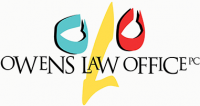Stray Cattle Cause Fatal Car Crash
When cattle create a roadway hazard, the same principles of negligence apply. These victims might still be entitled to substantial compensation.

Oklahoma City, OK -- (ReleaseWire) -- 12/26/2019 --A woman is dead and a man is in critical condition following a cattle-on-vehicle wreck in Grant County.
The wreck occurred on State Highway 74 not far from the Salt Fork River Bridge. 22-year-old Bryson Holeman's Lincoln collided with some cattle on the roadway. He lost control of his vehicle and spun into a ditch. He survived, but an injured passenger, 22-year-old Britton Stacy, was subsequently declared dead at a local hospital.
Investigators state that Holeman was wearing a seat belt and Stacy was not.
"These kinds of crashes are not too unusual in the Sooner State," observed Oklahoma City auto accident lawyer Phillip P. Owens II. "Legally, they combine aspects of both premises liability and motor vehicle liability claims."
The cattle-on-the-roadway part of this claim is probably a straightforward negligence action, Owens explained. These cases have five basic elements:
Duty: Generally, property owners have a duty of reasonable care. This duty includes keeping cattle off of roadways.
Breach: In this context, breach usually means knowledge. The owner must have known that the cows were on the road. That knowledge could be indirect; for example, the owner might have known about a hole in a fence.
Causation: What actually caused this accident? Did the driver hit one of the cows and lose control, or did the driver over-react to the cattle on the road and lose control of the vehicle? If both the driver and owner were partially at fault, a jury must divide liability between them on a percentage basis.
Proximate Cause: This phrase is Legalese for "foreseeable." If you go see a movie, you might get popcorn. Likewise, if cattle wander across a lonely stretch of highway, a car wreck is not an inevitable or even likely result. However, it is a foreseeable result.
Damages: In Oklahoma, damages in a car crash claim usually include compensation for economic losses, such as medical bills, and noneconomic losses, such as pain and suffering.
Additionally, note that, according to the police report, Stacy was not wearing her seat belt. Oklahoma is a seat belt defense state. So, the insurance company can use seat belt non-use to reduce or deny compensation to the victim.
However, there are some limits. Oklahoma's seat belt law only applies to front seat passengers. So, the defense arguably does not apply to unbuckled back seat passengers. Furthermore, the seat belt defense is an affirmative defense. The insurance company must prove that the vehicle's seat belt was operational, the victim was not properly restrained, and the lack of restraint caused the victim's injuries. These elements are not easy to prove.
Media Relations Contact
Phillip Owens
405-608-0708
https://www.owenslawofficepc.com
View this press release online at: http://rwire.com/1269678